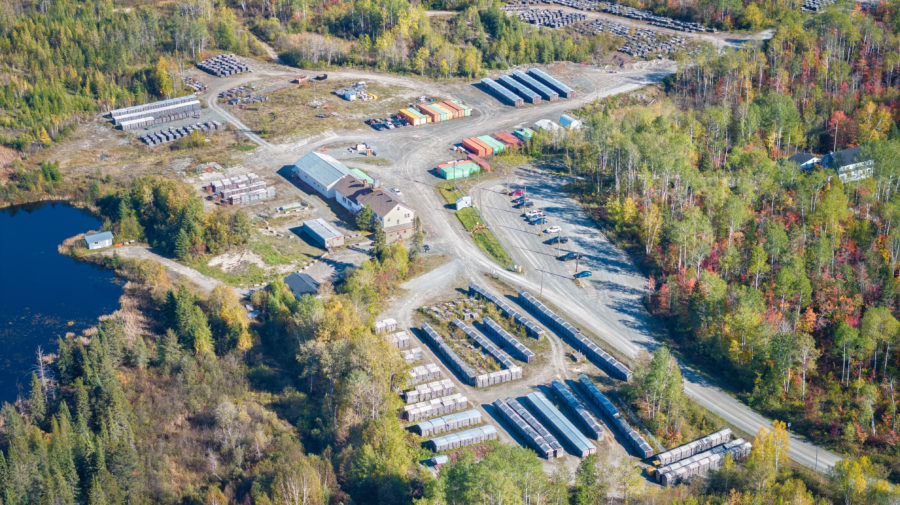Why Mount Polley failed
Jack Caldwell, blogger at I THINK MINING, speculates on the cause of the Mount Polley tailings dam failure.
There is a great silence of information about the geotechnical issues possibly involved in the failure of the Mt Polley tailings dam. No reports have been released; no letters published; no statistics provided. Oh sure, a few old numbers of incidents in 2012, but the 2013 report is not yet ready.
As in any place silence breeds rumours. People will talk and speculate, in spite of a promised independent report sometime next year. I well recall the government in South Africa in the old days believed that if they kept us ignorant and silent, they could perpetuate apartheid. That very upper class British attitude was behind the Dutchmen’s folly in South Africa and in British Columbia the British upper class belief that information is only for the upper class or a limited number of chosen few is still very much the prevailing ethic. So we the general public remain ignorant and uninformed as the rulers keep tight reign on information that in a democracy should long ago have been public.
Luckily today we have a tool to beat the rulers that did not exist in apartheid South Africa and of which the British Columbia rulers still seem ignorant: we have blogs. Scurrilous things, by opinionated fools, who are often drunk when they write. And thus let me exercise my free right to blog (Libera me as the Scots sing in MacBeth of the oppressive British.)
As a blogger, many free people have sent me information and opinions and pictures. The one above is one of them. It shows the corner of the Mt Polley dam that failed when tailings were first being placed. This is a fascinating photo. Notice that at the corner where failure occurred there is on the upstream side a kind of dark line running up the upstream face of the embankment. I have studied this long and hard and cannot make out what it is. But it is something different. Is it a trench, a zone of different material, a crack repair, a discontinuity of embankment construction where the two embankment meet? Doe it have anything to do with the later failure?
Now take a look at the photo below, obviously taken some time after the first one. They are still discharging tailings from the north side and they are still creating a fan beach with its crest near the corner that failed.
Now I see something very interesting on this photo. Notice that the fan beach of tailings seems to be bounded to the left of the fan by a topographic rise–the kind of green area on the left hand side of the white tailings. Now draw a line along the intersection of the green (vegetation?) and the white tailings. Draw the line upwards, and it goes through the dike or embankment and seems to continue on the downstream side of the embankment.
Is this “line” a distinct topographic break–maybe there was a cliff along that line and that is why the tailings fan did not rise up above it. Maybe there was a bedrock break along that line—so to the left, the foundation was solid. And maybe to the right of the line, the foundation was soft soil—and the foundation had a tendency to settle when loaded.
If this idea is correct, we could ascribe the embankment failure to differential settlement more or less at the corner: the embankment on rock foundation did not settle, whereas the embankment on a soil foundation did settle. The result would be a crack at the corner through which water poured.
Recall that this was the cause of a tailings dam failure a few years ago in some South American country whose name begins with G. I have the full story but have been sworn to silence as ………..you know the rest.
Now look at this picture below. This is after the failure. It appears as though there was an upstream failure of the embankment.
The obvious reasons for an upstream failure is what we dam engineers refer to as rapid drawdown—when the level of water is lowered fast, excess pore pressures in the dike cause upstream failure. Bet nobody considered that when they decided to lower the water level as ordered to do so by the regulators.
Of course if a crack due to differential foundation settlement caused all the water to rush out, as it did, then there was a dramatic instance of rapid drawdown failure at work. But that make rapid drawdown a result not a cause of the failure.
So a few sketch to further illustrate things. First below the situation before failure. I do not know how high the dam was, or how high the tailings behind the dam, or what the depth of water was. But even to the uninitiated it is obvious this is not a stable situation—vertical walls of soil bounded by water do not stand up. Try this if you doubt me: dig a hole in your garden. Make the side of the hole vertical. Fill the hole with water. In a short time the side of the hole will fall in. That is probably what happened at Mt Polley.
Next a sketch of what there was after failure. namely an upstream arc indicative of upstream failure.
Here then is a sketch that shows how and why upstream failure may have occurred. The water seeps through the soil. The water pressure pushes against a zone of failure as shown here bounded by the potential failure plane. In the case of Mt Polley this became an actual failure plane.
To be thorough, let us record the possibility that piping was the cause of failure. Professor Jennings was convinced this was the cause of the failure of the Bafokeng dam in 1972. In short there is a layer of more permeable soil sandwiched between two layers of less permeable soil. Water obviously flows preferentially through the more permeable soil. If it flows too fast, it kind of erodes the more permeable soil. Some of the pictures of the failure zone that I have seem to show layers of soil of very different type—whether the different types of soil include different permeabilities, I do not know. That should be in those construction reports that are under lock & key to which only the upper class is granted access.
Finally there is the possibility, as shown below, that outward movement of the adjacent embankments at the corner caused a crack to form. Recall this is what caused the failure of that tailings facility a few years ago in Hungary that resulted in tailings in the Danube. The figure below is a plan view of the two adjacent dikes that came together at the corner that failed. The big blue arrows are the force the water imposes on the dikes. If there is outward movement as a result of these force, the corner cracks and there is failure.
On the issue of secrecy, have you seen today’s comment on a previous blog posting to this effect:
I’ve learned (but not substantiated) that there were at least two independent third-party reviews of this facility, and yet it still failed. Clearly the reviews themselves are not enough to prevent failure.
This is new to me and certainly not hitherto mentioned. It will be interesting to see these reports if indeed they exist. I confess, I probably would not have worried too much about this corner if I had been doing the dam safety inspection. How often do we look at the foundation conditions that are the basis of design? Funny thing happened on the way to the forum. A while ago I did a dam safety inspection and determined that the design engineers had done no borings to establish foundation conditions. In fact they are terrible—both the design engineers and the foundations. But that is another story, for another day, many years hence.
Image of guy examining map by Tom Anderson
More News
{{ commodity.name }}
{{ post.title }}
{{ post.date }}











Comments